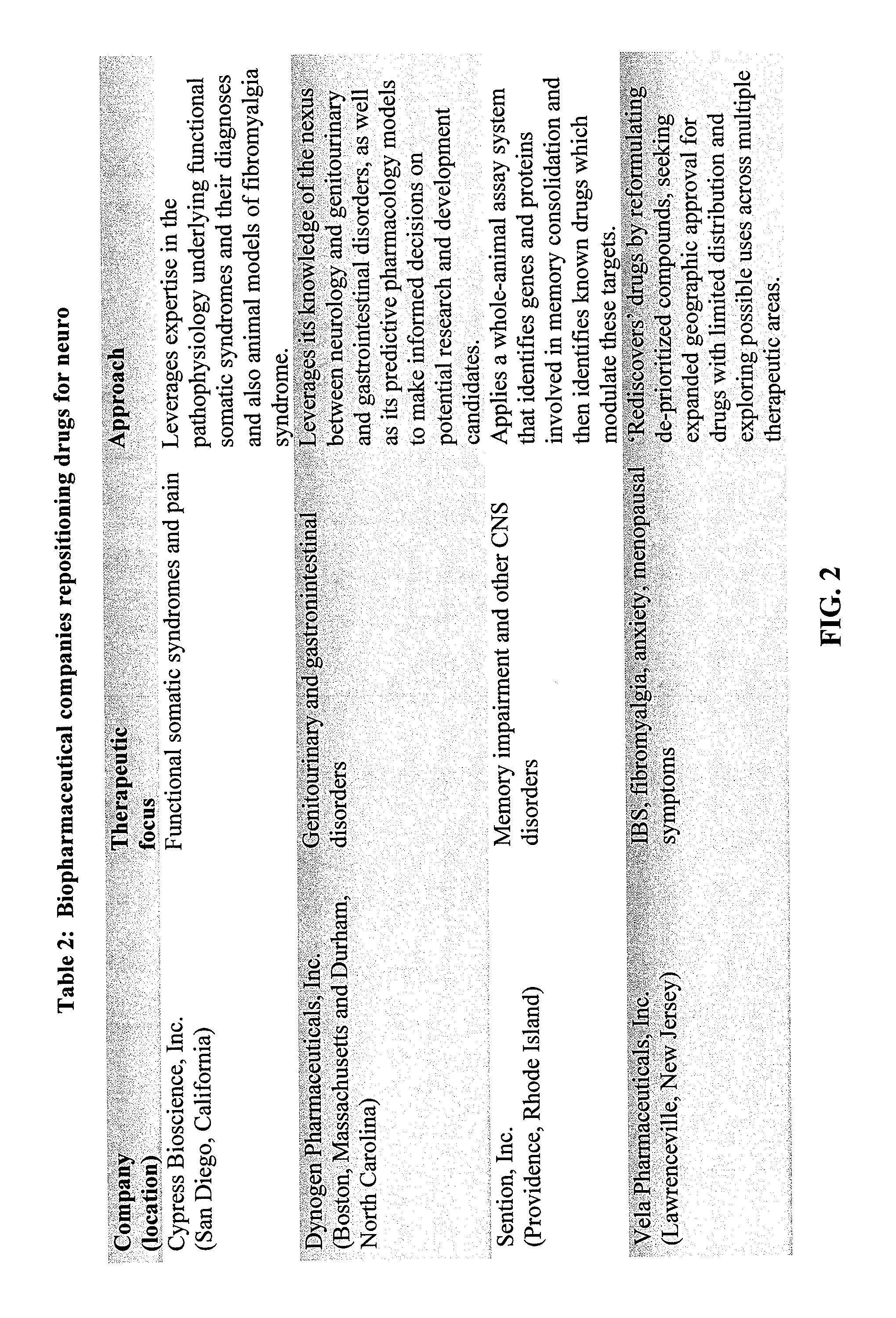Techniques for Purposing a New Compound and for Re-Purposing a Drug
- Summary
- Abstract
- Description
- Claims
- Application Information
AI Technical Summary
Benefits of technology
Problems solved by technology
Method used
Image
Examples
example a
Purposing Compound Under Development
[0272]In the example below, the present invention is used for purposing an anticancer drug under development in collaboration with the developing pharmaceutical company.
[0273]The method submitted here was used for two clinical indications (A and B), considered by the pharmaceutical company for phase II clinical trials. Optimata's recommended optimal treatment schedule for each indication was weighed against several treatment schedules such as the gold standard treatment for that indication, and the pharmaceutical company's suggested treatment schedule for each indication. The response to each of these treatment schedules was predicted, and a recommendation was provided to the pharmaceutical company for the treatment with the best predicted response.
[0274]For indication A, it was predicted (by the simulations, step 4.4.1) that the effective therapeutic window (a dose range for which the drug is effective) for the pharmaceutical company's suggested ...
example b
Repurposing Marketed Drugs
[0282]The example below involves the repurposing of approved marketed drugs for the treatment of mesenchymal chondrosarcoma (MCS). As this clinical indication is a very rare type of cancer with few new cases per year a standard treatment doesn't exist. For this indication three targeted drugs were considered (Bevacizumab, Sunitinib, Sorafenib), as well as four chemotherapeutic drugs (Docetaxel, Gemcitabine, Doxorubicin and Irinotecan) see FIG. 11. Mono-therapies and various combination therapies of these 7 drugs were compared.
[0283]Predictions indicate several therapies, namely, a Bevacizumab+Docetaxel combination, to be significantly superior to others. Over the simulated treatment period of up to 41 days, combinations with Bevacizumab were predicted to greatly enhance the treatment efficacy in comparison to the corresponding monotherapies (see FIG. 13). Prediction results were compared to the corresponding experimental growth curves of treated and untreat...
example c
Repurposing Marketed Drug in Combination with a Compound Under Development
[0294]In the example below, the above teachings are demonstrated to the repurpose an approved anti-angiogenic drug for use in combination with a cytotoxic drug under development.
[0295]Optimata's claimed method was used to determine a different indication A than the one currently used.
[0296]The claimed method was applied for indication A and the recommended new optimal schedule was predicted to be better than the response to gold standard treatment. Furthermore, the claimed method indicated that non-synchronized combination therapy (where the two drugs are not administered at the same time) increased the overall response (full+partial response) in comparison to the synchronized combination therapy (where the two drugs are administered together) suggested by the developer of the new drug (see FIGS. 16 and 17 below). The non-synchronized combination therapy also showed better recovery from the toxic effects (drop...
PUM
 Login to View More
Login to View More Abstract
Description
Claims
Application Information
 Login to View More
Login to View More - R&D
- Intellectual Property
- Life Sciences
- Materials
- Tech Scout
- Unparalleled Data Quality
- Higher Quality Content
- 60% Fewer Hallucinations
Browse by: Latest US Patents, China's latest patents, Technical Efficacy Thesaurus, Application Domain, Technology Topic, Popular Technical Reports.
© 2025 PatSnap. All rights reserved.Legal|Privacy policy|Modern Slavery Act Transparency Statement|Sitemap|About US| Contact US: help@patsnap.com



